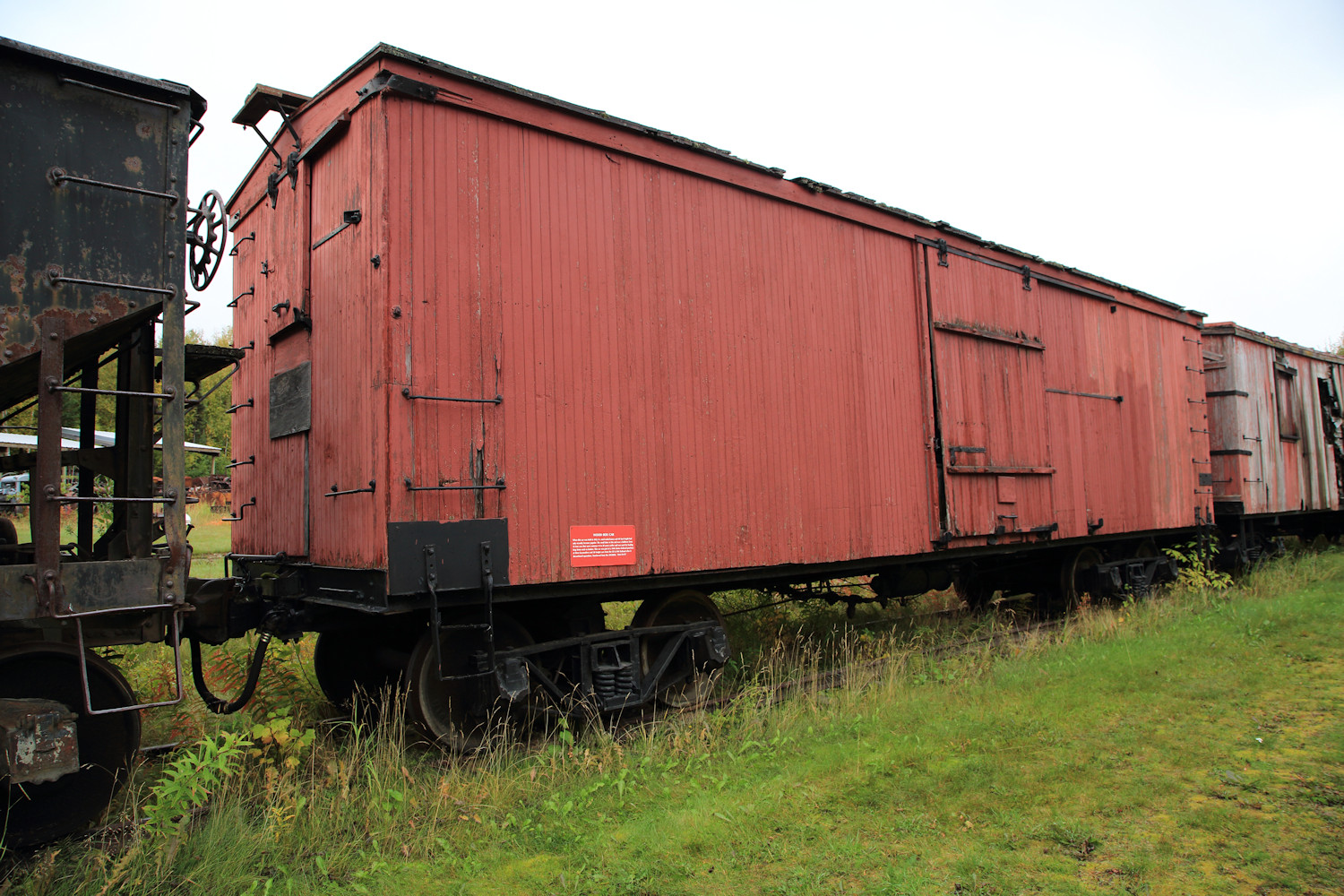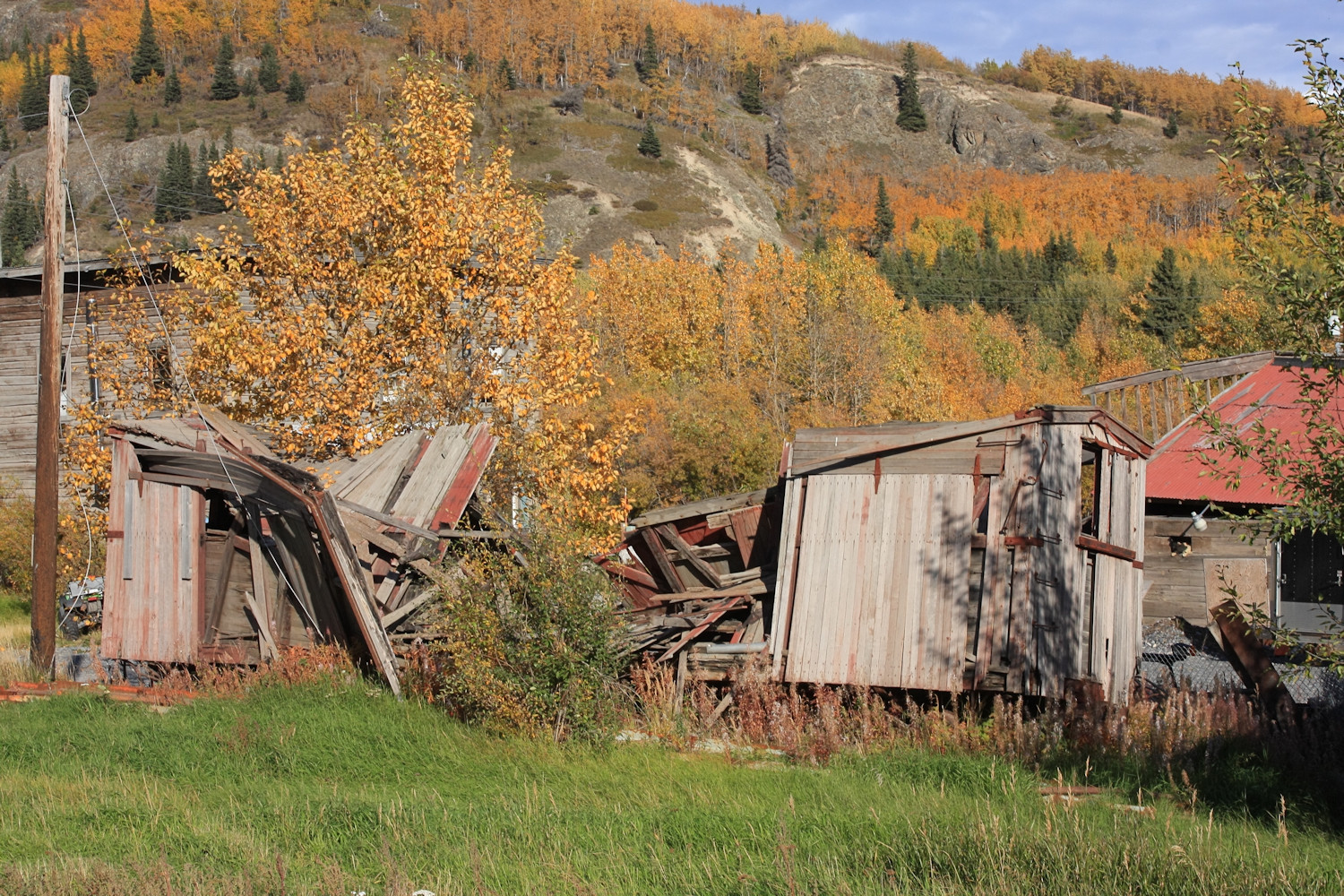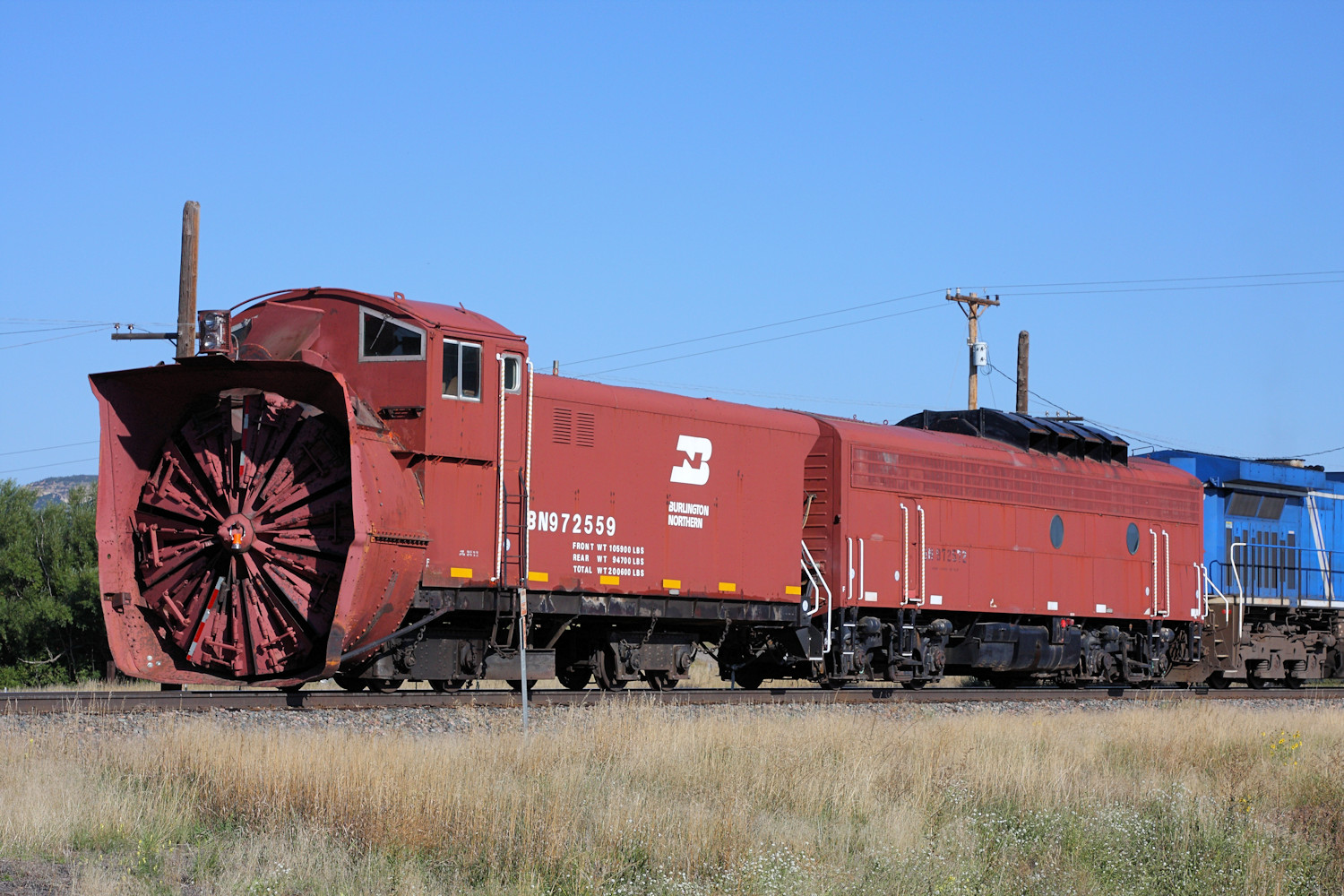Locomotives
A tender from the CRNW 70-series engines is in Moses Lake, WA. Apparently at one point it was mated to #73 as the paint showed through, but may have come from 70-72 originally based on casting dates of 1915. (source) After the CRNW folded, CRNW 71 – damaged from a boiler explosion – remained in Cordova through the war years and was included in the lot purchased by the ARR in 1946. This likely would have been the tender left with #71.
Regardless, the tender wound up behind Alaska Railroad rotary #3. (source) When Alaska Railroad #557 was sold to Monte Holm in 1964, this CRNW tender wound up behind it instead of the US Army tender it had hauled around for years. When 557 was sent back north, the tender was left behind as it wasn’t correct for the engine’s restoration. Consequently the tender remains. (That does leave the question of which tender #73 got when it was sold to the McCloud River Railroad in 1940.)
Katalla Company #3, a Dickson Manufacturing 0-4-0T purchased for the initial construction of the CR&NW and later numbered CRNW #3, was sold to the Alaska Anthracite Railroad for their operation out of Katalla around 1916. When the railroad went bankrupt around 1923, #3 and a string of cars was abandoned at Goose City along the Bering River. The equipment is still there, inaccessible and rusting away, but they can be seen in aerial photos.
No other locomotives are known to have survived.
Freight Cars
At two CRNW wooden cars survive at the Museum of Alaska Transportation and Industry (MATI) in Wasilla, AK. The cars were part of a group sold to the ARR after the CRNW shut down. One was originally a box car, and the other is noted as a wooden refrigerated car that the CR&NW picked up from the Northern Pacific (and the ARR later turned into a bunk car).

A third CRNW boxcar survived in Chitina at least through 2009, although falling apart. When I was back in 2015, the car was gone (presumed scrapped) and the lot turned into a gravel parking area.

A fourth wooden boxcar exists at McCarthy near the turntable area that may be of CRNW origin. However, when examined in 2015, the car is heavily modified and is in rough shape.
Passenger Cars
The only known passenger car to survive is CR&NW #100. At the end of operations, the car was sold to the Chicago, Burlington & Quincy, who renamed it “Aleutian”. The car was modernized in 1952 at the Aurora, IL, shops, and then sold to the Missouri Portland Cement Co. in 1966. When they no longer wanted it, the car was donated to the National Museum of Transportation in St. Louis, MO, where it exists today restored to CB&Q appearance.
While a source on the CB&Q mailing list says it was modernized in Aurora – and I don’t doubt that – at least some work appears to have happened at the CB&Q’s Lincoln, NE, shops when it was acquired by the Burlington. I acquired a CR&NW silver coffee server from an antique dealer in Lincoln who said she’d purchased a number of CRNW pieces from a long-time Burlington shop employee. Apparently he’d acquired them from the #100 when it passed through the shops and all the silver and china was replaced.
Rotary Plows
It is believed that BNSF rotary 972559 began life as CR&NW X-4, built by Alco-Cooke in 1915. The plow was sold to the Northern Pacific as their #46 in 1941, and later became NP 47. It was converted to electric operation in 1966 and mated with NP F9B #6701B as a power unit. During that 1966 rebuilding, the body of the plow was heavily modified and now looks very unlike X-4 except for the fan and underframe/trucks. The plow set was completely refurbised at Relco in Albia, IA, in 2011 and is still in active service on the BNSF.

Bridges
The Miles Glacier (“Million Dollar”) Bridge exists at the end of the Copper River Highway going east/north out of Cordova. The northernmost span fell in the river as a result of the 1964 Good Friday Earthquake, but was repaired in 2004-2005. The bridge became inaccessible again in 2011 when Bridge 339 in the Copper River Delta failed, severing the end of the highway. In 2016, a large iceberg damaged one of the iceberg deflectors, leaving the structure again vulnerable to damage. However, for the moment the bridge is intact and – aside from the highway deck and the rebuilt pier #3 (part of the 2004 repairs) – largely original.
The Kuskulana Bridge continues to carry the McCarthy Highway (the old grade) across the Kuskulana Gorge. At some point the rails were removed and the bridge had a highway deck added, and this and the the approach trestles have been refurbished somewhat recently (date unknown).
The Gilahina Trestle (the second one – built in 1914 after a forest fire got the original) survives alongside the McCarthy Road, though is in a very bad state of disrepair. The west end was removed for construction materials and the center bents over the creek are completely rotted out. It’s only a matter of time until more of the trestle collapses.
Numerous other trestle bents exist within the Copper River canyons between Miles Glacier and Chitina and are visible from satellite imagery, but are inaccessible except by boat or air.
Structures
The McCarthy depot survives, and has been refurbished as a local museum.
A number of other structures survive as well, and I’ll add them to this list as time allows.